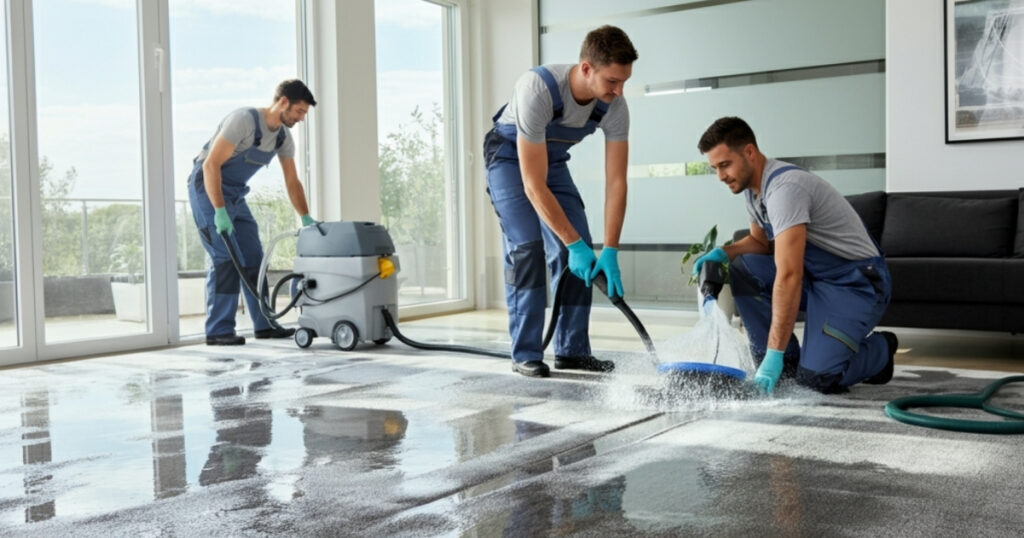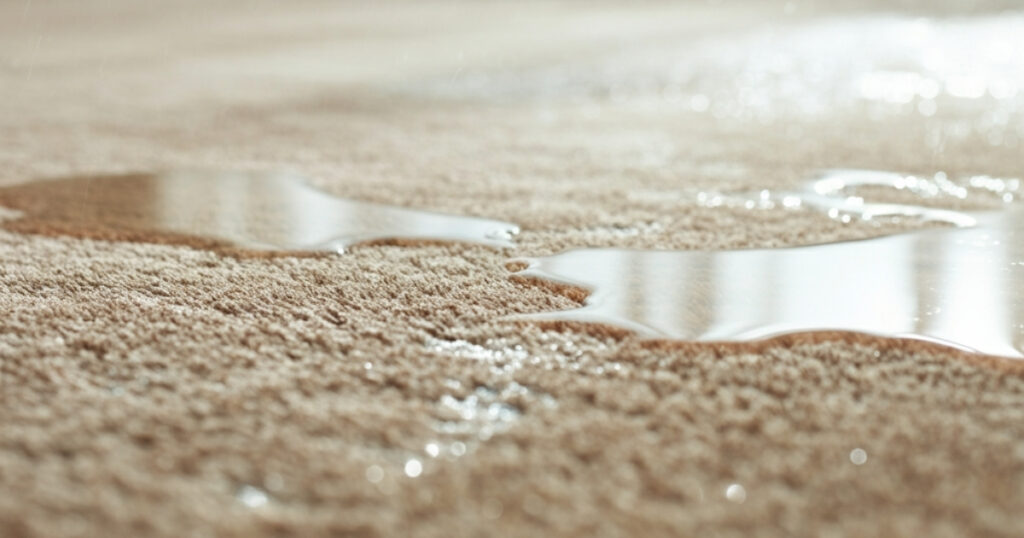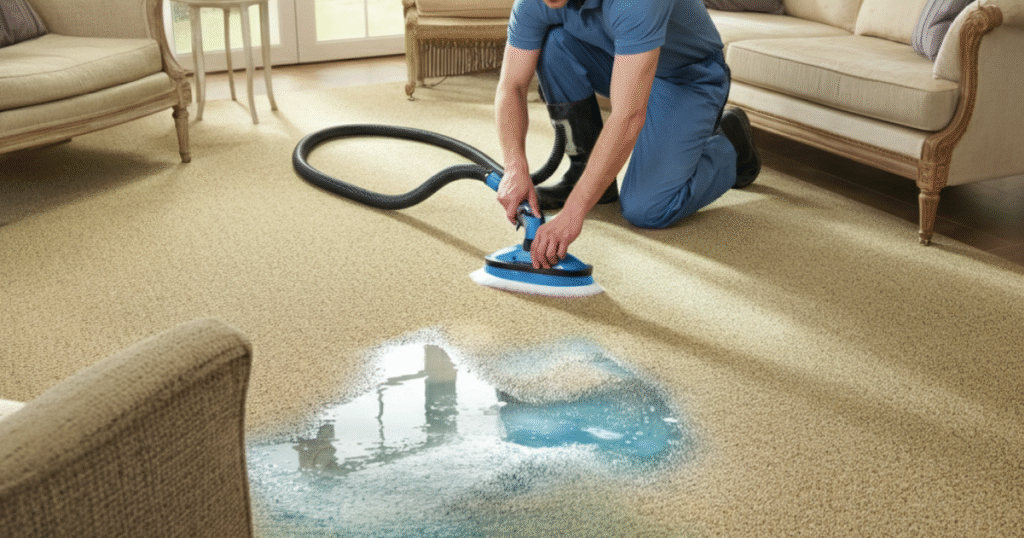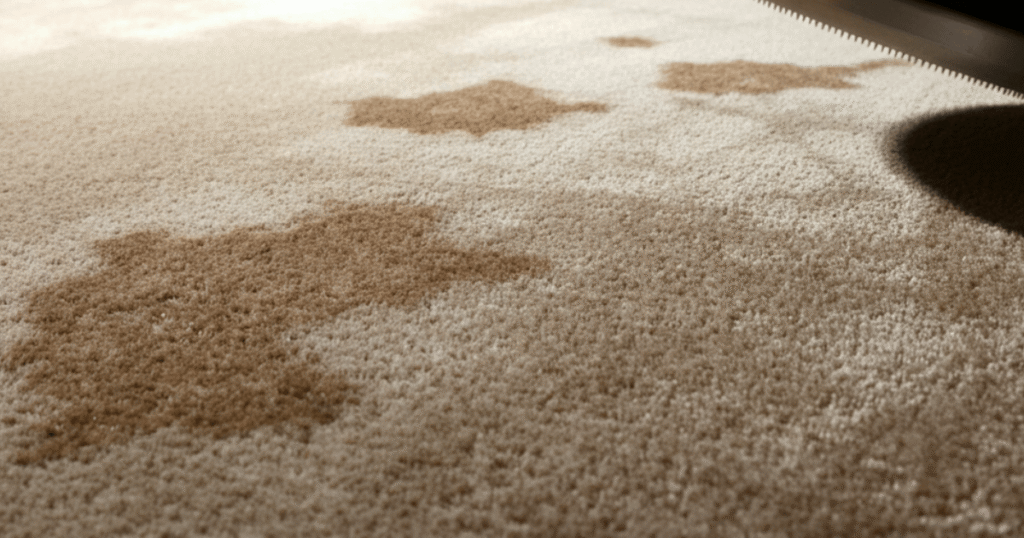Discovering mold on your favorite fabric armchair or sofa is alarming. Not only is it an eyesore, but it can also pose health risks and create unpleasant musty odors. If you’re wondering how to get rid of mold on fabric furniture, you’ve come to the right place. Removing mold requires a careful and thorough approach, but with the right techniques and materials, you can restore your furniture and keep it safe for your home.
Mold thrives in damp, dark, and poorly ventilated environments. Fabric furniture, with its absorbent materials and hidden crevices, can easily become a breeding ground for these unwelcome fungi. Whether the cause is a spill that wasn’t properly dried, high humidity in your home, or furniture stored in a damp basement, tackling the problem quickly is essential. This guide provides a step-by-step process to safely and effectively eliminate mold from your upholstered pieces.
Understanding Mold on Fabric Furniture
Before you begin the cleaning process, it is important to understand what you’re dealing with. Mold is a type of fungus that grows in multicellular structures called hyphae. It can appear in various colors, including black, green, white, or even pink, and often has a fuzzy or slimy texture. On fabric, it might look like a stain or a patch of discoloration. Besides its appearance, mold is often accompanied by a distinct musty smell.
This smell is caused by microbial volatile organic compounds (MVOCs), which are gases produced by the mold. Inhaling these can lead to health issues, especially for individuals with allergies, asthma, or compromised immune systems. Therefore, it is crucial to take safety precautions and address the mold growth as soon as you spot it.
Preparing to Remove Mold from Upholstery
Proper preparation is key to successfully removing mold and preventing its spread. Gathering the right supplies and setting up a safe workspace will make the process smoother and more effective. Furthermore, taking safety measures is non-negotiable when handling mold.
Essential Supplies You Will Need
Before you start, gather the following items. Having everything on hand will prevent you from having to stop midway through the cleaning process.
- Safety Gear: A face mask (N95 respirator is ideal), rubber gloves, and safety goggles.
- Vacuum Cleaner: One with a HEPA filter is best to trap mold spores.
- Soft Brush: For scrubbing away surface mold.
- Cleaning Solutions: Options include rubbing alcohol, white vinegar, or a specialized mold and mildew cleaner.
- Clean Cloths or Sponges: You will need several for applying solutions and wiping down the furniture.
- Spray Bottles: To apply cleaning solutions evenly.
- Fan or Dehumidifier: To aid in the drying process.
Setting Up a Safe Workspace
It is best to work outdoors if possible. This prevents mold spores from spreading to other areas inside your home. If you must work indoors, choose a well-ventilated room. Open all windows and use fans to create a cross-breeze. Moreover, lay down plastic sheeting under and around the furniture to catch any stray spores or cleaning solution drips, protecting your floors. Keep pets and children away from the area until the furniture is completely clean and dry.
Step-by-Step Guide: How to Get Rid of Mold on Fabric Furniture
Follow these steps carefully to eliminate mold from your upholstered furniture. Remember to always test any cleaning solution on a small, inconspicuous area first to ensure it doesn’t cause discoloration or damage to the fabric.
Step 1: Vacuum the Affected Area
First, put on your safety gear. Use a vacuum cleaner with a HEPA filter to thoroughly vacuum the entire piece of furniture, not just the visible mold spots. This will remove loose spores from the surface and prevent them from becoming airborne when you start scrubbing. After vacuuming, immediately dispose of the vacuum bag in a sealed plastic bag and take it outside. If your vacuum is bagless, empty the canister outdoors and wash it thoroughly with hot, soapy water.
Step 2: Brush Away Surface Mold
Next, take the furniture outside if you haven’t already. Use a soft-bristled brush to gently sweep away any remaining visible mold from the fabric surface. Be careful not to scrub too aggressively, as this can push the mold deeper into the fibers. The goal is simply to remove the surface layer of growth before applying any cleaning solutions.
Step 3: Apply a Cleaning Solution
Now it’s time to treat the mold. You have a few options for cleaning solutions, each with its own benefits. Always start by testing your chosen solution on a hidden spot.
- Rubbing Alcohol Solution: Mix equal parts rubbing alcohol and water in a spray bottle. Lightly mist the moldy areas. The alcohol will help kill the mold and will evaporate quickly, reducing the risk of over-saturating the fabric.
- White Vinegar Solution: Alternatively, you can use undiluted white vinegar. Its acidic nature makes it effective at killing many types of mold. Pour it into a spray bottle and apply it directly to the affected fabric. The vinegar smell will be strong but will dissipate as it dries.
- Commercial Mold Cleaner: If you prefer a store-bought option, choose a cleaner specifically designed for upholstery. Follow the manufacturer’s instructions carefully for application and safety.
Step 4: Gently Scrub and Blot the Fabric
After applying the cleaning solution, let it sit for about 10-15 minutes to penetrate the mold. Then, use a clean cloth or sponge to gently scrub the area in a circular motion. This will help lift the mold from the fabric fibers.
Once you have scrubbed the area, use a separate, clean, damp cloth to blot the fabric and rinse away the cleaning solution and mold residue. Be sure to wring out the cloth well to avoid adding excess moisture to the furniture. Repeat this blotting process until the area is clean.
Step 5: Thoroughly Dry the Furniture
Drying the furniture completely is perhaps the most critical step in preventing mold from returning. If any moisture is left behind, the mold can easily grow back. Place the furniture in a sunny, well-ventilated spot to air dry. Direct sunlight is beneficial as UV rays can help kill any remaining mold spores.
To speed up the drying process, you can use fans or a dehumidifier. Point fans directly at the damp areas to increase air circulation. A dehumidifier will help pull moisture out of the air and the fabric. Ensure the furniture is bone-dry before bringing it back inside. This may take a full day or even longer, depending on the humidity and temperature.
How to Eliminate Musty Smells from Fabric Furniture
Even after the visible mold is gone, a lingering musty odor might remain. This smell is a tell-tale sign that some mold or moisture is still present. Getting rid of this smell is the final step to fully restoring your furniture.
Using Natural Deodorizers
Natural products are excellent for absorbing odors without adding harsh chemicals to your furniture. Baking soda is a classic choice. Sprinkle a generous layer of baking soda over the entire surface of the dry furniture and let it sit for several hours, or even overnight. It will absorb any remaining moisture and odors. Afterward, vacuum it up thoroughly.
Activated charcoal is another powerful odor absorber. Place a few bowls of activated charcoal around and under the furniture to pull odors from the air and the fabric itself. You can also place charcoal briquettes (without lighter fluid) in old socks or fabric bags and tuck them into the cushions and crevices.
Preventing Future Mold Growth on Furniture
Once your furniture is clean and fresh, you will want to take steps to prevent mold from coming back. Prevention is all about controlling the environment in your home, especially the moisture levels.
Maintain Proper Humidity Levels
The most important factor in mold prevention is controlling humidity. Mold thrives in high humidity, so aim to keep the humidity level in your home between 30% and 50%. Use a dehumidifier in naturally damp areas like basements, bathrooms, and laundry rooms. An inexpensive hygrometer can help you monitor humidity levels throughout your home.
Ensure Good Air Circulation
Good airflow helps prevent moisture from settling on surfaces. Arrange your furniture to allow air to circulate freely around it. Avoid pushing large pieces directly against walls. Using ceiling fans or portable fans can also help keep the air moving, which discourages mold growth. Additionally, open windows regularly to let fresh air in, especially after activities that create moisture, like cooking or showering.
Frequently Asked Questions
1. Can I use bleach to clean mold off fabric furniture?
No, it is generally not recommended to use bleach on fabric furniture. Bleach can be too harsh for most upholstery fabrics, causing discoloration and weakening the fibers. It’s better to stick with gentler options like rubbing alcohol or white vinegar.
2. Is it safe to clean moldy furniture myself?
Yes, you can safely clean small areas of mold yourself if you take the proper safety precautions. However, if the mold covers a large area (more than 10 square feet) or if you suspect it has penetrated deep into the furniture’s frame, it is best to consult a professional restoration service.
3. How can I tell if the mold is completely gone?
You will know the mold is gone when there are no more visible signs of growth and the musty odor has been eliminated. After cleaning, keep a close eye on the furniture for a few weeks to ensure no new spots appear.
4. What should I do if the fabric is not colorfast?
If you’re worried about your fabric’s color, it is crucial to test your cleaning solution on a hidden area first. If you notice any color bleeding or fading, you may need to call a professional upholstery cleaner who has access to specialized, color-safe cleaning products.
5. Can mold on furniture make me sick?
Yes, mold can cause health problems, particularly for sensitive individuals. Symptoms can include allergic reactions like sneezing, runny nose, and skin rashes, as well as asthma attacks. This is why wearing protective gear and ensuring proper ventilation during cleanup is so important.
Restore Your Furniture with Confidence
Learning how to get rid of mold on fabric furniture is a valuable skill for any homeowner. While the sight of mold can be distressing, a methodical and careful approach can successfully restore your beloved pieces. By preparing properly, using the right cleaning techniques, and taking steps to prevent regrowth, you can protect both your furniture and your family’s health. With a little effort, your furniture can be clean, fresh, and mold-free once again. Read next: Is Leather Furniture Good for Dogs?
As an Amazon Associate, I earn from qualifying purchases.




